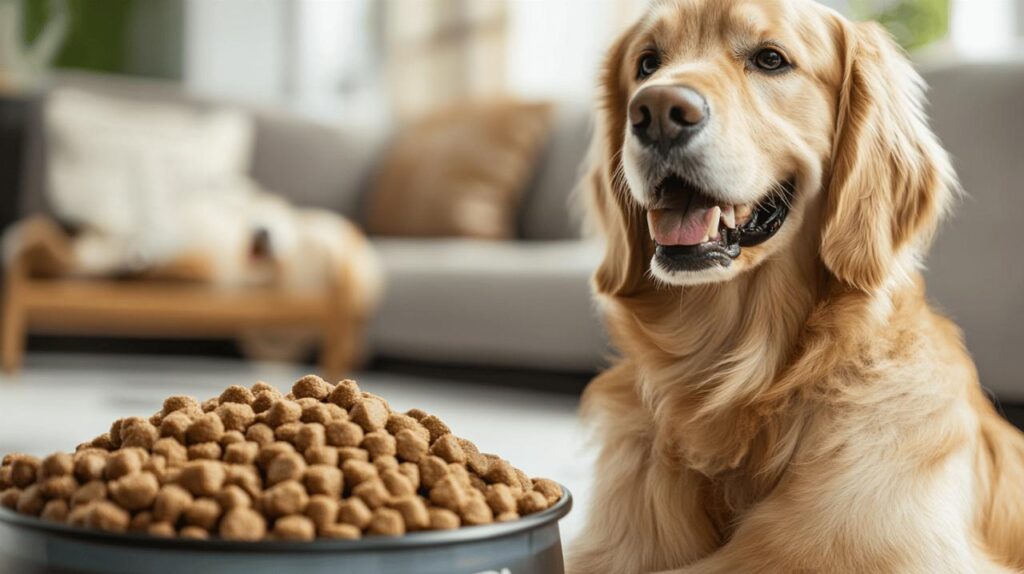Providing your canine companion with wholesome nourishment is one of the most important responsibilities of dog ownership. Many pet parents are now exploring alternatives to commercial kibble, seeking to create homemade recipes that offer transparency, quality, and a personal touch. Crafting your own adult dog food using chicken and noodles as a base can be a rewarding endeavour, allowing you to tailor meals to your dog's specific needs whilst ensuring every ingredient meets your standards. This guide offers kitchen-tested insights into preparing a homemade alternative to a typical 1.42kg bag of commercial kibble, blending nutrition with practicality.
Understanding the Nutritional Needs of Your Adult Dog
Before you embark on creating homemade dog food, it is essential to grasp what your adult dog requires from their diet. Canine nutrition is a complex balance of proteins, fats, carbohydrates, vitamins, and minerals, all working together to support vitality and longevity. Adult dogs have different nutritional demands compared to puppies or senior dogs, and understanding these distinctions is the foundation of preparing a safe and effective homemade meal.
Essential Proteins and Their Role in Canine Health
Protein is the cornerstone of any healthy dog diet, serving as the building block for muscles, tissues, and enzymes. Chicken is an excellent source of lean protein, offering essential amino acids that support muscle development, repair, and overall energy levels. Unlike some plant-based proteins, animal proteins provide a complete amino acid profile, which is crucial for maintaining your dog's health. When preparing homemade kibble, ensuring that chicken is fresh and properly cooked is vital to avoid bacterial contamination whilst preserving its nutritional value. Protein also plays a key role in maintaining a shiny coat and healthy skin, as well as supporting a robust immune system. The quality of the protein you choose directly impacts your dog's ability to thrive, so sourcing high-quality chicken from reputable suppliers is a worthwhile investment.
Balancing Carbohydrates and Fibres for Digestive Wellness
Whilst protein is paramount, carbohydrates and fibres are equally important for your dog's digestive health and energy reserves. Noodles, when chosen carefully, can serve as a digestible source of carbohydrates, providing sustained energy throughout the day. However, not all carbohydrates are created equal. Opting for whole grain or vegetable-based noodles can add valuable fibre, which aids in maintaining regular bowel movements and supporting gut health. Fibre also helps your dog feel fuller for longer, which is particularly beneficial for those prone to weight gain. Vegetables such as carrots, peas, or sweet potatoes can be incorporated alongside noodles to enhance the nutritional profile, offering vitamins and minerals that support overall wellness. Striking the right balance between proteins, carbohydrates, and fibres ensures that your homemade kibble is not only tasty but also nutritionally complete.
Sourcing quality ingredients for homemade chicken nood kibble
The success of your homemade kibble hinges on the quality of the ingredients you select. Unlike commercial dog food, where ingredient sourcing can be opaque, making your own allows you to handpick every component, ensuring freshness and nutritional integrity. This section explores what to look for when sourcing chicken, grains, and vegetables for your homemade recipe.
Selecting fresh chicken: what to look for
Choosing the right chicken is perhaps the most critical step in preparing homemade dog kibble. Fresh, high-quality chicken should have a firm texture, a pleasant aroma, and a consistent colour without any discolouration or unpleasant odours. Organic or free-range chicken is often preferred, as it tends to be raised without antibiotics or hormones, offering a cleaner protein source. When purchasing chicken, consider using breast meat for a leaner option or thighs for a slightly higher fat content, which can be beneficial for active dogs. Always ensure the chicken is handled and stored correctly to prevent bacterial growth, and cook it thoroughly before incorporating it into your kibble recipe. Removing bones and skin is essential, as cooked bones can splinter and pose a choking hazard, whilst excess fat can lead to digestive upset.
Choosing the Right Grains and Vegetables for Your Recipe
Grains and vegetables add texture, fibre, and essential nutrients to your homemade kibble. When selecting noodles, opt for varieties made from whole wheat, brown rice, or even legume-based flours, which offer more nutritional value than refined white pasta. These alternatives provide complex carbohydrates that release energy slowly, helping to maintain stable blood sugar levels. Vegetables such as carrots, green beans, and spinach are excellent additions, offering vitamins A, C, and K, along with antioxidants that support immune function. Avoid ingredients that are toxic to dogs, such as onions, garlic, and grapes, and always wash and chop vegetables into small, manageable pieces. By carefully selecting grains and vegetables, you can create a balanced and varied diet that keeps your dog healthy and satisfied.
Step-by-step guide to preparing homemade dog kibble

Once you have gathered your ingredients, the next step is to transform them into a kibble that is both nutritious and palatable. Preparing homemade dog kibble requires careful attention to cooking methods, drying techniques, and storage practices to ensure the final product is safe and long-lasting.
Kitchen equipment and preparation methods
To begin, you will need basic kitchen equipment, including a large pot for boiling, a food processor or blender for mixing, and a baking tray for drying. Start by cooking the chicken thoroughly, either by boiling or baking, until it reaches an internal temperature that ensures all harmful bacteria are eliminated. Once cooked, shred or chop the chicken into small pieces. Cook the noodles separately according to package instructions, ensuring they are tender but not overly soft. In a large bowl, combine the cooked chicken, noodles, and finely chopped vegetables, mixing thoroughly to ensure an even distribution of ingredients. For a finer texture, you can pulse the mixture briefly in a food processor, but be careful not to over-process, as some texture is beneficial for dental health.
Cooking, drying, and storing your homemade kibble
After mixing, spread the mixture evenly onto a baking tray lined with parchment paper. Use a rolling pin or your hands to flatten the mixture to a uniform thickness, ideally around half a centimetre. Bake the mixture in a preheated oven at a low temperature, typically around 150 degrees Celsius, for several hours, turning occasionally to ensure even drying. The goal is to remove moisture without burning the kibble, resulting in a crunchy texture similar to commercial kibble. Once fully dried, allow the kibble to cool completely before breaking it into bite-sized pieces. Store the homemade kibble in an airtight container in a cool, dry place, or refrigerate it for extended freshness. Properly dried and stored, your homemade kibble can last for several weeks, providing a convenient and healthy alternative to shop-bought options.
Ensuring Safety and Nutritional Balance in Your Homemade Dog Food
Whilst making your own dog food offers numerous benefits, it also requires vigilance to ensure safety and nutritional adequacy. Understanding common pitfalls and seeking professional advice can help you avoid potential health issues and provide a balanced diet for your dog.
Avoiding common pitfalls and harmful ingredients
One of the most significant risks of homemade dog food is inadvertently including ingredients that are toxic to dogs. Onions, garlic, chocolate, grapes, raisins, and certain artificial sweeteners such as xylitol are extremely dangerous and should never be included in any canine recipe. Additionally, excessive salt, sugar, or fat can lead to health problems such as obesity, pancreatitis, or kidney issues. Always research any new ingredient before adding it to your recipe, and when in doubt, leave it out. Another common mistake is failing to provide a balanced diet over time. Whilst a single meal may be nutritious, consistently offering the same recipe without variation can lead to deficiencies in essential vitamins and minerals. Rotating ingredients and incorporating a variety of proteins, carbohydrates, and vegetables can help ensure your dog receives a well-rounded diet.
Consulting with Your Vet for Tailored Dietary Advice
Even with the best intentions, it can be challenging to create a perfectly balanced homemade diet without professional guidance. Consulting with your veterinarian or a canine nutritionist is highly recommended before transitioning your dog to a homemade diet. A vet can assess your dog's individual needs based on factors such as age, breed, activity level, and existing health conditions, offering tailored recommendations to ensure nutritional completeness. They may also suggest supplements such as calcium, omega-3 fatty acids, or multivitamins to fill any gaps in your homemade recipes. Regular check-ups and blood tests can help monitor your dog's health and make adjustments as needed. By working closely with a veterinary professional, you can confidently provide your dog with a homemade diet that supports their long-term health and happiness.

